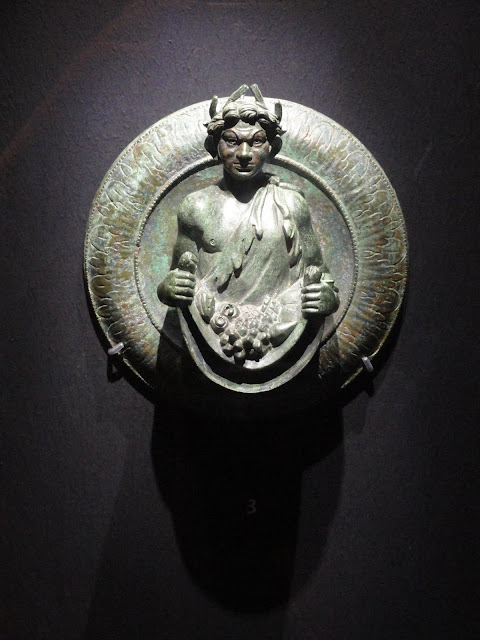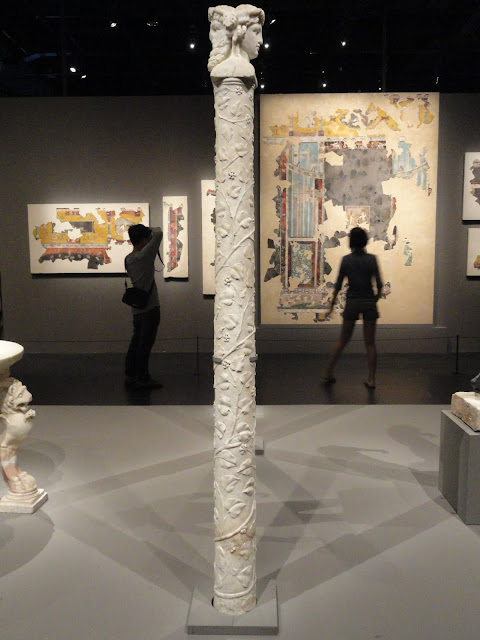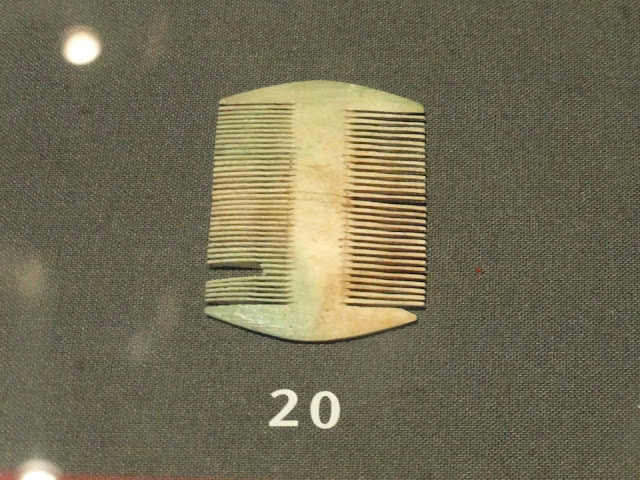Queueing to get in at the last hour.

The first sight that greeted us was rather grim. Although there were many visitors that day, standing there looking at the cast of the bodies of the victims of the eruption of Mount Vesuvius, you could somehow feel the silence and emptiness that must have engulfed the town right after.
Here we have the cast of a shackled man, which most probably would have been either a slave or a criminal who was left behind when others fled the town.

Even animals were not spared the volcano's wrath when they were left behind by their fleeing owners. This dog had been chained to a post and managed to climb up the lapilli that filled the house till it eventually ran out of rope, suffocated and died.

A test tube containing a sample of the ash, collected over six days, from the 1906 eruption of Mount Vesuvius.

The remaining portion of a fresco, possibly of Victoria, the Roman goddess of Victory, from the house of Marcus Fabius Rufus.

A bronze fountain head featuring a satyr, found in the unique unisex Suburban Baths which were built close to the walls of Pompeii and which boasted a heated swimming pool.

A bronze container, possibly to store the oil used in conjunction with pumice to clean bodies, before the invention of soap.

Garden statues were commonly found in the homes of the people. Hunting scenes were especially popular. This statue of a hound attacking a wild boar served to provide commoners vicarious participation of the excitement and thrill of a sport accesible only to the wealthiest, and was used as a means to garner social and political support.

The statue of a hound mauling a bird was equally popular. Besides being decorative, it served as a conversational piece for the owners of the house and their guests, as they recall the excitement of the hunts staged at Pompeii's amphitheatre.

A beautiful marble herm with intricate floral carvings that once stood as a pair in a garden courtyard, features the two faces of the god Bacchus - one youthful, the other mature. It's intention was to show the passing of time and the renewal of life.


A marble statue of Venus that once stood in the grand villa of Poppaea near Pompeii. According to mythology, the Roman goddess of love sprang from the foam of the sea, and as Pompeii depended on the sea for its prosperity, it adopted her as its divine protector.

And all grandness aside, what caught my attention was this humble comb. It looks exactly like the comb my grandmother used!


No comments:
Post a Comment